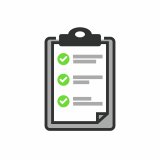Build Your Local Lead Action Plan: A Guide for Local Leaders
Local Lead Action Plan Guide
The Local Lead Action Plan (LLAP) Guide is a framework that provides local government officials with resources to identify lead issues in their city, town, community, county, or other geographic area (local area), then develop a sustainable, targeted action plan using the LLAP Template.
Lead exposure can result from multiple sources since lead can be found in all parts of our environment – the air, the soil, the water, and even inside our homes - making it complicated to address. The LLAP Guide is designed to help local government officials respond to the challenges of identifying and addressing lead comprehensively, whether their local area has been working on lead issues for decades or is just beginning this work. Benefits of using the LLAP Guide include creating a broader awareness of lead issues among local officials, helping them clearly define goals and prioritize actions regarding lead, and creating an action plan that acknowledges and addresses the specific lead issues and needs of a particular local area.
The LLAP Guide is not designed to provide instructions on how to solve a local area’s lead problems; rather, it is a voluntary tool that local government officials can use to organize their approach to addressing the specific lead issues impacting their local area.
Instructions for Using the LLAP Guide
Below is a step-by-step overview of how to use the LLAP Guide. For more detailed instructions, click here
Step 1: Complete the LLAP Guide Checklists

The recommended first step for local government officials wanting to create an action plan to address lead issues in their local area is to fill out the three checklists included with the LLAP Guide:
- Checklist 1: Assessing Local Lead History and Data;
- Checklist 2: Identifying Potential Lead Issues; and
- Checklist 3: Identifying Opportunities to Address Lead.
These three checklists are designed to help local government officials gain a better understanding of local lead issues and potential solutions. The interactive checklists are designed to inquire about local lead data, history, potential current issues, and lead programs, and provide resources for finding this information.
Step 2: Create a Local Lead Action Plan

Solutions to the lead issues identified in your local area can become goals to achieve, and gaps identified can become opportunities and activities in your LLAP. To do this, fill in and customize the LLAP Template, based on the concerns and goals you identified while completing the checklists in Step 1.
Need help developing your LLAP? Interested in seeing some examples? Access the Local Lead Action Plan Strategies for Success here.
Step 3: Implementation

Implementation of your Local Lead Action Plan is beyond the scope of the LLAP Guide because each local area has its own lead issues and unique needs, as reflected in the customized LLAP created in Step 2. However, EPA has recommended best practices, potential partners, and several resources that local government officials may use to implement their own customized Local Lead Action Plan. Refer to your LLAP for guidance on which additional resources presented on the Implementation page may be beneficial to you and your community.
Have a Question?
Contact your EPA Regional Office’s Lead Contact at https://www.epa.gov/lead/contacts-epa-regional-offices-lead-poisoning-prevention-efforts
For more information on the Local Lead Action Plan (LLAP) Guide, contact Hannah Bartling at bartling.hannah@epa.gov
LLAP Guide Demo
For more information on how to use the Local Lead Action Plan (LLAP) Guide, visit EPA’s YouTube page to access a Pre-Recorded Demo.
Local Lead Action Plan (LLAP) Guide
If you are a local government official who wants to develop an action plan to address lead issues in your local area, the following resources are for you:
- Build Your Local Lead Action Plan: A Guide for Local Leaders
- LLAP Guide Checklists
- Local Lead Action Plan Template
- Implementation
- Strategies for Success
